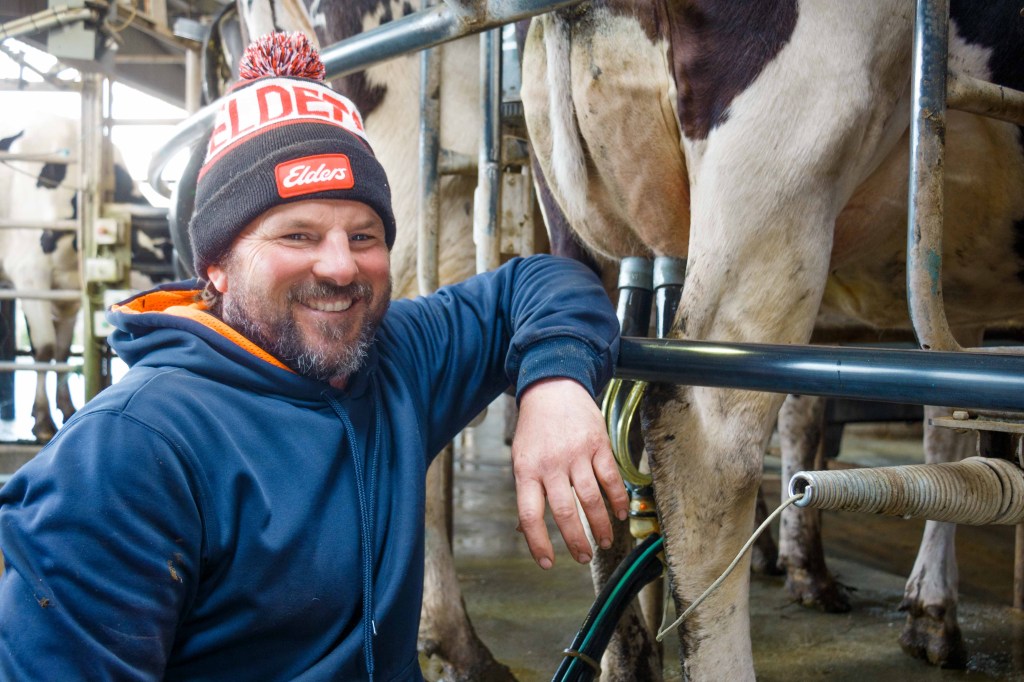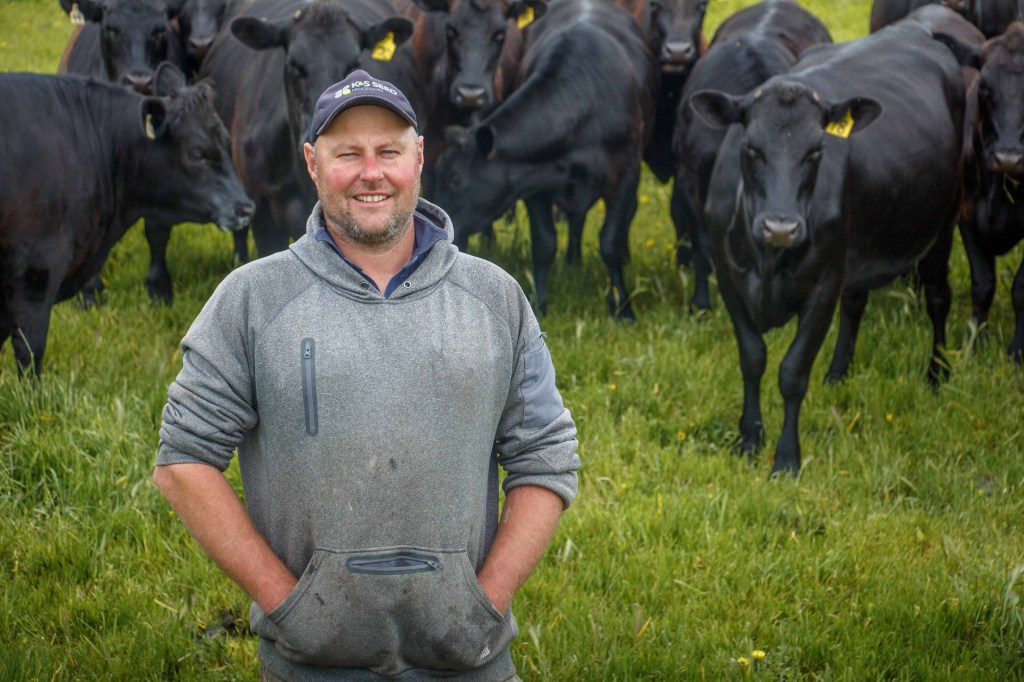Breeding better cows faster
When Adam Maidment breeds replacement Holsteins, he knows one thing for certain – they will be the best animals on the farm. This conviction comes from a strict heifer selection process – including genomics, sexed genetics and a significant dairy-beef program. He also knows breeding from the best is the fastest ticket to genetic gain. And the 2800-cow dairy herd he manages is now reaping the rewards. “We are focused on more consistency, type in the herd and cows that are going to last,” Adam explained. “With the concentration on bringing more heifers into the herd with higher Balanced Performance Index (BPI) we are getting a more even herd.”
Adam is the herd manager at Mundoolun Dairy, a vertically integrated grain, small seed production, dairy and beef operation at Mt Schank in the South East of South Australia. Owned by the Telford family, including Trevor and Lynn, their sons and daughters-in-law Travis and Sally, Justin and Natalie, the business milks 2800 cows, calves three times a year – using seven-week timed artificial insemination programs – and turns-off hundreds of beef and ABS Beef InFocus™ animals each year.

Genetics – and genetic gain – is vital to the profitability and sustainability of the entire business. Working with ABS technical and genetic services representative Matt Aikenhead, Adam and the Telford family have focused on “breeding better cows faster”. Genomic testing and retaining the highest BPI animals are central to this plan.
In recent years, genomics has been used to identify the bottom 25 per cent of the business’s dairy heifers, ranked on BPI and other attributes such as health. These animals were removed from Mundoolun’s breeding program, either exported or earmarked for an ABS Beef InFocus joining. Subsequently, the heifers and young cows with the best BPI, health and production traits remain in the herd and are bred to dairy sexed genetics to fast-track genetic gain. Three years into their five-year plan and this approach is already reaping rewards. “Calves do better if they have a better BPI,” Adam said. “From what I’ve seen so far, it’s made a big difference.”
Breeding differently
Adam hasn’t always worked with the BPI system and “jumping ship” to the “Mundoolun way” has been a work in progress. Previously, he bred cattle with a traditional focus on pedigrees, linear traits and a concentration on US and Canadian indexes.
Convincing Adam of the merits of BPI has involved many “long conversations” according to ABS’ Matt Aikenhead. “It’s been fun,” he said. “We genomically test all calves after each calving and there was a time recently where the second highest heifer coming through the system (for the whole farm) was actually his calf. What was also interesting for Adam was looking at the BPI of each animal and comparing it to the herd test information to see who was still milking at 200 days. The high BPI animals – they were still milking them.”
But the breeding chats haven’t been a one-way flow of information. Incorporating Adam’s approach to breeding with the existing Mundoolun philosophy sets the business up to have the best of both worlds, according to Matt. “There’s long been a belief that there’s a dichotomy, someone is either index or type, when it comes to breeding,” Matt said. “Really, dairy farmers should be both. Adam is a good cow man; he knows what type of cows he wants and has a lot of input when we are picking the sires. We are trying to marry good type and keep the BPI as high as possible.”
A cow to fit the business
Ask Adam Maidment about his ideal cow and he doesn’t skip a beat. “She’s 600-650 kilograms, doing around 8000 litres with a really good udder and good feet and legs,” he said. “It would be nice to see her get to six to seven lactations because I believe that saves money in the long-term. It’s about spending money on cows that last longer, rather than replacements.”
His opinion is shared by Mundoolun Dairy owner Travis Telford. The Telford family business has grown and evolved considerably in recent decades and now, more than ever, Travis is convinced of the value of genetics. They use genetics and herd improvement tools strategically to breed genetically superior cows that also work practically in their farming system. “What we’ve gone more towards, and it is certainly working now, is breeding the cow to fit the system, not making the system fit the cow,” Travis said. “For example, we run cup-removers and retention arms. Cows that haven’t got even quarters or their teat length or anything to do with their udder that is not right, it can’t stay.”
Using sexed genetics on the highest BPI animals and removing the lowest from the dairy system through export or a dairy-beef program has fast-tracked the breeding of cows that fit the Mundoolun system. “Cow health, feet, udders, fertility, production and conformation, they are all on the up,“ Travis said. “We are getting less mastitis and producing 680-690 kilos of solids from cows weighing 580-650kg.”
Beef bonanza
About 200 of the lowest BPI dairy cows at Mundoolan Dairy are bred to ABS Beef InFocus™ each year. It ensures these animals remain productive, but they are also removed from the dairy breeding program. “With InFocus we can use it over our Holsteins and get pretty close to a straight Angus animal,” Travis said. “It gives us flexibility, we can sell bucket-reared InFocus calves, we can keep a line of the heifers, artificially inseminate them and sell them pregnancy tested in calf. “With the steers, we sell them at about 250-300kg to a backgrounder at Hamilton.”

The Telfords have even gone a step further, joining InFocus females to Black Angus and Black Simmental bulls and selling progeny as vealers. The family now has 300 beef breeders, of which, 75 per cent are ABS Beef InFocus animals. Not only have they created another income stream for their family farm, but it’s also assisted the sustainability of their dairy operation. “Calf truck is a dirty word, and it will only become harder down the track to sell bobby calves,” Travis said. “That’s why we are using more sexed semen in the front end of our mating program and, at week three or four in our seven-week breeding program, we switch to InFocus. We get all the Friesian heifers we want without too many Friesian bulls. A dairy-beef animal has a much better outlook on life. As a beef animal we have a saleable item, whether we take $200 cash at five days old or grow it out. It’s about value adding.”
